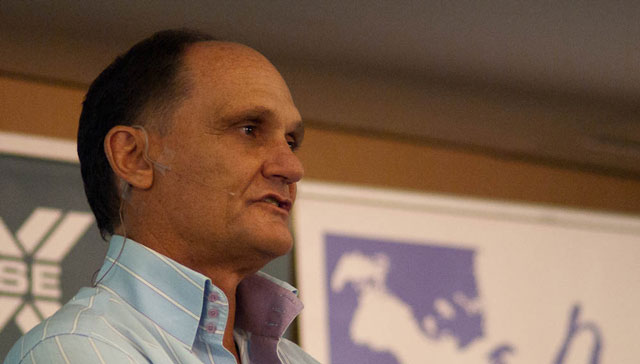
Cell C will also switch on a fourth-generation (4G) mobile network using long-term evolution (LTE) technology in 2012, but the company is not saying where this network will be built or how many towers will be supported.
CEO Alan Knott-Craig says, however, that the best way to approach LTE is for all interested operators and other parties to form a consortium to build a wholesale national network covering both urban and rural areas.
Knott-Craig says he won’t reveal details about Cell C’s 4G plans for competitive reasons, but will say the initial focus will be on urban rather than rural areas. Rivals MTN and Vodacom have both said they will offer the next-generation technology in Johannesburg, Durban and Pretoria on a commercial basis before the end of the year. MTN has said it wants as many as 500 towers to be ready for service when it launches commercial LTE services.
However, in an interview with TechCentral, Knott-Craig says that instead of each of the operators building its own national LTE network, it would make much more sense for them to work together to build one wholesale network whose prices are regulated.
“Everyone will have little skirmishes in building a little LTE here and there, and so will we. All of us will do it this year,” Knott-Craig says. “But by far the best option is to stop [the process of] auctioning spectrum and allocate it instead to one entity comprising the operators and other companies, if they want to be part of it, and build a wholesale LTE network for the country.”
This consortium, he says, must not be owned or controlled by the government.
Knott-Craig says all available spectrum — for LTE, the 800MHz and 2,6GHz bands are most highly prized — should then be allocated to the consortium. “Anyone can then take the wholesale price and compete,” he says. “Everyone can add their personal touch. Some will be national, some will niche, but they will be working off the same wholesale price.”
He says that by pooling resources and spreading capital expenditure across the industry, it would be possible to build a “really good national network where rural is as important as urban”. If operators build their own networks, Knott-Craig says they will cherry-pick in urban areas and rural areas will lose out. He says the idea of auctioning off chunks of spectrum makes no sense as the successful bidders will have to pass on the costs in the form of higher tariffs.
Other challenges have to be overcome before LTE will take off in SA, he adds. The biggest impediment is the “lack of a national fibre backbone”. High-speed fibre optics is needed to connect 4G towers to ensure there is sufficient backhaul to provide consumers with the sort of access speeds the technology promises. — (c) 2012 NewsCentral Media




